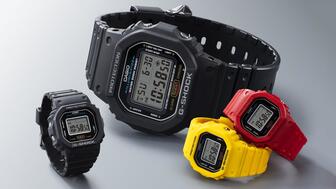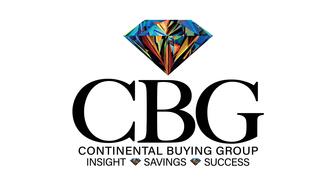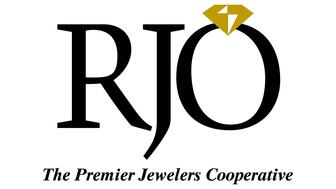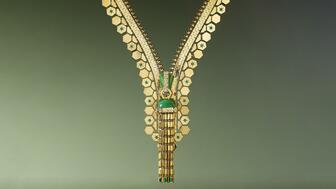The new pink sapphire version of the piece dances with its wearer in the brand’s “Icons After Dark” holiday campaign.
Gübelin’s Blockchain for Gems Now Open to the Industry
The Swiss gem lab’s Provenance Proof technology debuted during AGTA GemFair.

The Swiss gem lab launched its Provenance Proof Blockchain during AGTA GemFair, officially opening its use to the trade.
Now, any professional stakeholder along the supply chain can register and, after a standard “Know your Customer” check, start using it.
It’s been a little more than a year since Gübelin announced it was developing the program to trace colored gemstones from mine to market, which it calls the first of its kind in the world.
The project comes as part of the lab’s Provenance Proof initiative, a long-term program designed to develop and provide technologies to the gemstone industry to make it more transparent. It includes the lab’s “Emerald Paternity Test.”
Gübelin’s blockchain aims to track a stone as early in the supply chain as possible to build a record of each rough gemstone’s journey. The owner or custodian of the stone is then able to contribute certain information to the log book through to, and including, the end consumer.
Fura Gems was the mining pilot partner, offering goods at its Coscuez Colombian emerald mine as test subjects for the blockchain technology.
The Gübelin family shouldered the cost of developing the technology, which means it is free to use for anyone in the trade.
“The industry has been changing and consumers are now interested in transparency, and this was my main motivation … to support blockchain and this whole initiative because I think we need to change now,” Raphael Gübelin, president of the House of Gübelin, said in Tucson.
To help keep it inclusive, every process, including the registration and upload of the data, can be done on a smartphone.
Visibility is restricted to the user in custody of the gemstone, and only is allowed upstream—meaning the current users can see who had the gemstone before them but do not see where it goes once it leaves their possession—though Everledger CEO Leanne Kemp told National Jeweler during an interview after the launch event that it could be reversed to allow someone at the beginning of the chain to see subsequent actions should users give permission to do so.
Gübelin Gem Lab Managing Director Daniel Nyfeler also noted that the lab has no privileged insight into specific data of the blockchain; the lab itself can only see the information entered into the blockchain relating to the stones it is entrusted with testing.
WATCH: Gübelin Explains How the Blockchain Works
He said it also makes economic sense to embrace it; blockchain could offer greater visibility for companies along the supply chain and offer retailers the full information to build the story behind a stone.
Nyfeler, along with Kemp, Raphael Gübelin, Fura Gems Vice President Marketing and Sales Rupak Sen, and Pat Syvrud, minerals, materials and society program development manager at the University of Delaware, took part in a panel after presentations during the Tucson launch.
During the panel, Nyfeler addressed one of the biggest criticisms of blockchain—it does not have the ability to prevent a user from entering false data that then appears legitimate as it is locked into the blockchain.
“Blockchain is not the silver bullet that’s going to bring 100 percent trueness in the industry immediately, but … it’s going to be much easier to determine over time and see patterns, and you’re going to see where such wrong information might come from, which so far is not the case and that’s the point where we were starting from,” he said.
When an attendee also asked whether the small-scale miners would care about becoming a part of this, Nyfeler said it was up to the industry to encourage them to do so.
Looking to the future, he told National Jeweler that Provenance Proof, like De Beers’ Tracr, is a long-term venture that eventually will be spun off as its own company.
A supervisory board will be entrusted with making strategic decisions, such as data security and compliance issues, and will consist mostly of individuals independent of the gemstone industry “in order to minimize the risk of conflicting interests.”
And since certain segments of stakeholders will have specific needs related to the use of the blockchain, such as a large-scale miner or wholesaler wanting interfaces to allow for the automated upload or exchange of the company’s inventory system, Provenance Proof—not Gübelin Gem Lab—will oversee designing, building and implementing solutions to address these needs.
The Latest

A choice that’s generated a lot of commentary, Pantone says “Cloud Dancer” marks a fresh start and encourages relaxation and creativity.

The manufacturer’s holiday campaign features a gift guide filled with trending designs and jewelry that can be personalized.

How Jewelers of America’s 20 Under 40 are leading to ensure a brighter future for the jewelry industry.

The man was charged with theft, accused of ingesting the necklace while in a jewelry store in Auckland, New Zealand.


The Florida independent expanded its store from 8,000 to 14,000 square feet, fulfilling the vision of its late co-founder, Jim Dunn.

Sponsored by De Beers Group

Roseco’s 704-page catalog showcases new lab-grown diamonds, findings, tools & more—available in print or interactive digital editions.

The classic 5600 series G-Shock has been scaled down to about a tenth of its size, becoming a fully functioning watch ring.

The association’s annual conference and gala will take place Feb. 4, 2026, during the Tucson gem shows.

The January show will include a workshop for jewelry retailers on implementing AI to strengthen their businesses.

Fellow musician Maxx Morando proposed to the star with a chunky, cushion-cut diamond ring designed by Jacquie Aiche.

The retailer, which sells billions in fine jewelry and watches, is suing the Trump administration and U.S. Customs and Border Patrol.

Black Friday is still the most popular shopping day over the five-day holiday weekend, as per the National Retail Federation’s survey.

The historic egg, crafted for Russia's ruling family prior to the revolution, was the star of Christie’s recent auction of works by Fabergé.

The retailer offered more fashion jewelry priced under $1,000, including lab-grown diamond and men’s jewelry.

The eau de parfum is held in a fluted glass bottle that mirrors the decor of the brand’s atelier, and its cap is a nod to its “Sloan” ring.

In addition, a slate of new officers and trustees were appointed to the board.

Witt’s Jewelry in Wayne, Nebraska, is the organization’s new milestone member.

The man, who has a criminal history, is suspected of being the fourth member of the four-man crew that carried out the heist.

The single-owner collection includes one of the largest offerings of Verdura jewels ever to appear at auction, said Christie’s.

Michael Helfer has taken the reins, bringing together two historic Chicago jewelry names.

The guide features all-new platinum designs for the holiday season by brands like Harwell Godfrey, Ritani, and Suna.

During its Q3 call, CEO Efraim Grinberg discussed the deal to lower tariffs on Swiss-made watches, watch market trends, and more.

Rosior’s high jewelry cocktail ring with orange sapphires and green diamonds is the perfect Thanksgiving accessory.

The “Embrace Your True Colors” campaign features jewels with a vibrant color palette and poetry by Grammy-nominated artist Aja Monet.

Luxury veteran Alejandro Cuellar has stepped into the role at the Italian fine jewelry brand.



























